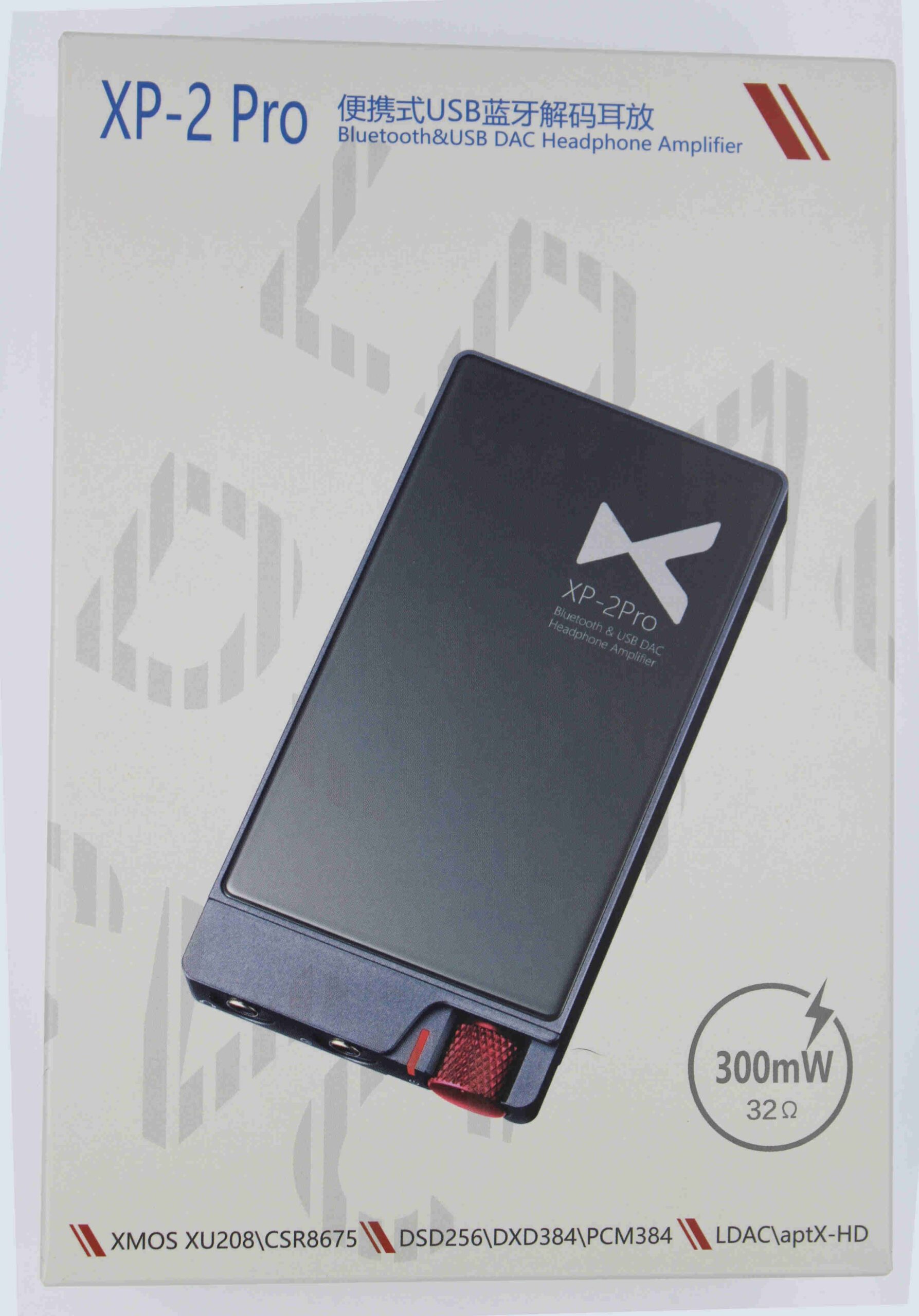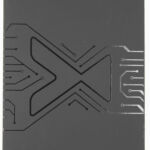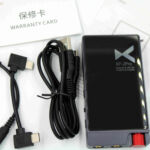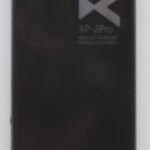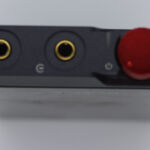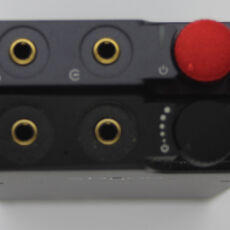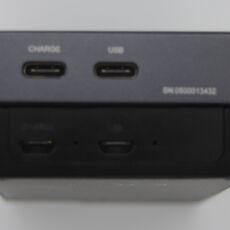Xduoo Xp-2 PRO Bluetooth DAC/Amplifier
Disclaimer: The XP-2 Pro was provided to me by Xduoo for purposes of this review. I had reviewed the original model and they asked that I see if the new Pro model addressed some of the things I didn’t love about the original. I have received no guidance on content, nor have I received any remuneration for this review. I have no financial interest in Xduoo or any of its subsidiaries. If you have an interest in the XP-2 Pro – check Xduoo’s website.
Unboxing:
The Xp-2 Pro came in very similar packaging to the original. It came double boxed with a white cardboard outer package with graphics on front and details on rear and a black lift-top style inner box done in much more subtle tones. The inner box has a shelf the device rests on and a compartment underneath with the cables and kit hiding in it. The XP-2 comes with a 3.5mm male to male cable, a USB OTG cable (USB-C to USB-C), and a USB-A to USB-C charging cable, a manual, and warranty card. Overall a very familar packaging but one that has good functionality and utility. I do wish it came with either a carry bag or some form of mount for attaching it to a phone.
Build:
While build is similar to the original, there are some key differences. USB is updated to USB-C for both power and data connections, the volume knob is now Red (nice touch), and the sides are now glass instead of the original aluminum and does give the Pro a bit more premium feel. Size has not changed and it still is roughly the size of a deck of cards while weight is also roughly that of a full sized deck of cards or maybe a bit heavier. The glass is potentially a bit less durable than the original, but does give the Pro a bit more premium feel. Jacks are countersunk in the face and the volume knob is well protected. I wish I could say the same for the buttons on the side of the player as I did find a tendency to change modes when carrying the player in a pocket and in that respect it is a bit less tactile than the original. The rear has separate USB-C ports for data and charging which allows the device to be connected to a phone via USB without draining the phones battery to power it. While bluetooth has gotten a lot better, it still has trouble rivaling wired connections so having that option gives users the option of using either mode as appropriate. I found the provided cable worked well as did the DDHifi TC05 cable. Those are quickly becoming my favorite C-C OTG cable.
Internals:
The original used a SA9123 USB Controller, a bluetooth chip, and an AKM4452 DAC. On the Pro, the DAC is still the AKM4452 while the op-amps and buffers are stepped up a bit. and op-amps are still OPA1652 and 1622 with the3 LMH6643ma buffer but both the other sub-systems are upgraded. This makes sense as nothing was wrong with the signal path before. Gone is the SA9123 replaced with the Xu208 for handling USB duties, likewise the bluetooth controller is now a CSR8675 for improved connectivity. Battery life is roughly equal between the two so that too seems to be largely unchanged. The changes to the USB have reduced THD and improved capability. While the original was limited to 24/192 and PCM only, the Pro is 32/384 capable and also supports DSD up to and including DSD256. The new Bluetooth controller adds LDAC, AptX HD, and low latency in addition to the SBC,AAC, and AptX of the original. I was able to force my phone into each mode and pair to the Pro and it worked quite well in both AptX HD and LDAC. This is a definite improvement over the original and for those that want to use the Pro as a bluetooth amplifier will find it a vast improvment on the original.
Features:
The Pro doesn’t add any new tricks, nor does it lose any of the function of the original. Its simplest mode is as a wired Amplifier. In this mode, input is via the 3.5mm aux in/out port and output is via the 3.5mm Phone Jack. Xduoo advertises the amp circuit as having ± 5V rails for maximum drive which provides roughly 300mW @ 32Ω. I found the little unit had no problem powering most headphones including the 600Ω Beyer 990 and HD700s. The Pro is obviously more at home with low impedance devices but will work with larger cans as long as sensitivity is fairly high. I tried it with the He6 and it simply is over-matched to the point it couldn’t produce a listenable volume even on high gain. I was not expecting this to work and am in no way surprised it didn’t, but use the example to show others the limits of this device. On low gain, even my most sensitive iems (things like the Magaosi K5) had no hiss to speak of.
Next up, USB DAC Mode. I tested this using the iPhone 10 with a camera connection kit, an LG v40, a Motorola Z3 Play smartphone, and a Surface Pro 4. The Xduoo worked effortlessly with all of them so whatever caused the hiccup between the moto on the original has been resolved. I also tried it paired to the Cayin N3 and Hidiz AP80 as sources and both worked as expected.
Bluetooth mode allows pairing a source device to the Pro and then using the phone or tablet control the device. I found it easiest to set the volume on the Pro itself to as high as I was likely to use and then control all functions from the phone, Others may prefer to adjust the volume via the physical control on the Pro. The Gain switch still works exactly like it does in wired mode as basically all amplifier functions are independent of input type. I can say that the new protocols improved connectivity considerably and I had no issues with drop-outs as long as distances were kept within reason. I found 30-40 feet in open air to be about its limit and a single interior wall presented little problem. Multiple interior walls or a single exterior wall on the other hand defeated it rather quickly. Battery life in bluetooth mode is lessened somewhat, but it was still able to put in an entire workday (8 hours without needing a charge). (When used as a wired amp, I was able to get 2 days out of it before it cut out).
Controls
Like the original, the controls are on the side of the unit with the exception of the on/off/volume knob on the face of the unit with the 3.5mm ports. Looking at the right hand side of the unit from left to right, we have the microphone, yep you read that right, the Bluetooth Pairing button, the gain Switch, and the mode selection switch. The LED has been moved to the face next to the volume knob and now displays blue for Bluetooth, Red for USB input, and Green for Auxillary in. In USB and Bluetooth mode, the LED also works to indicate either connection protocol (BT) or file type in use. With Bluetooth, blinking blue is pairing, solid blue is paired (SBC), Cyan (AAC), purple (AptX (any form)), and white (LDAC). In USB Mode, 44.1/48 PCM is red, 88/96 PCM is cyan, above 96 PCM is purple, and white is DSD.
Microphone
One of the things that can be problematic for users who pair their phone with any audio device is that device becomes the default for taking phone calls as well. With TWS headphones one feature we always look at is the quality of the microphone. With Dac/Amps, the problem is most don’t support microphone pass through and don’t allow use of the mic on an earphone even if it has one. Xduoo came up with a unique solution to this problem. Instead of requiring the user to have earphones with a mic, they built one into the Xp-2 Pro itself so the user can take calls regardless of what headphone is plugged in. I found the microphone to work well as long as the Pro was not in a pants pocket. Sitting on the desk or in a shirt pocket, the mic works fine and is indeed a welcome addition.
Sound
Unlike the original, I found little change in coloration between Bluetooth and wired modes and some of the coloration that was present even in USB mode of the original is gone as well. The XP-2 Pro is very linear as long as load is not too heavy. I did find on 600Ω Beyers and things like the T50rp Variants it sounded a bit rolled off at the low end due to lacking enough output power to really make them happy. When kept to more reasonable pairings, the Pro has good extension on both ends. I did find a very mild lift of the vocals in all modes and a slight smoothing of some of the rough edges of source material. This is not uncommon on the AKM velvet series dacs and is probably a good choice considering this device is an entry level device and will likely be fed a consistent diet of poor source material. Overall I was impressed with the improvements between the original and the Pro when A/B testing the two. That led to the photos below.
Comparison:
Conclusion
The original XP-2 was a jack of all trades and while quite good, it failed to provide the level of connectivity of some others and it lacked the DSD support and support for high end formats of things like the xDSD. While it is hard to see that as too big a criticism since it was 1/3 the price of a lot of those competitors, those factors combined with some coloration of the sound probably did limit the popularity of the XP-2. Happily Xduoo listened to what users wanted and updated the device to handle all the things that limited the appeal of the original. The Pro offers DSD support including DSD256 and PCM support up to 32/384. Still no MQA, but big improvements none the less. Controls are a bit more intuitive, and the microphone allows the user to pair the Pro to a phone and still take full advantage of the phone itself. One can still take calls, the battery life of the phone is not adversely impacted by using the Pro since it has its own battery and even with the USB connected, the data port is unpowered so won’t tax the source device. What little coloration is present is arguably the fault of the DAC chip itself and for many that same coloration will be welcomed because it means that the Pro will handle poor source material and clean up some of the rough edges. I really liked the original for a budget device, but the Pro I really like regardless of price. Its not quite the TR-amp, but for 1/2 the money its a great option.
-
Packaging - 7/107/10
-
Accessories - 7/107/10
-
Build Quality - 8/108/10
-
Sound Signature - 7/107/10
-
Connectivity - 7.5/107.5/10
-
Battery Life - 8/108/10
Summary
Pros – premium feel, improved bluetooth and USB, DSD and 32/384 support
Cons – No mode memory, no MQA support

